Yoshifumi Ikeda / Hiroko MiharaFounder of Give Me Vegetable / Nanpu Shokudo (Chef)
Recommend Tour06
Yoshifumi Ikeda / Hiroko MiharaFounder of Give Me Vegetable / Nanpu Shokudo (Chef)
Recommend Tour06
The Millennium Future Crafts Festival was held at the Echizen City Aisin Sports Arena on August 27 and 28, 2022.In this context, we, Yoshifumi Ikeda and cookery researcher, Hiroko Mihara of Minamikaze Shokudo, visited Echizen City for the first time to hold Give Me Vegetable, a food and music event where the admission fee is vegetables, which has been held around Japan since 2010.
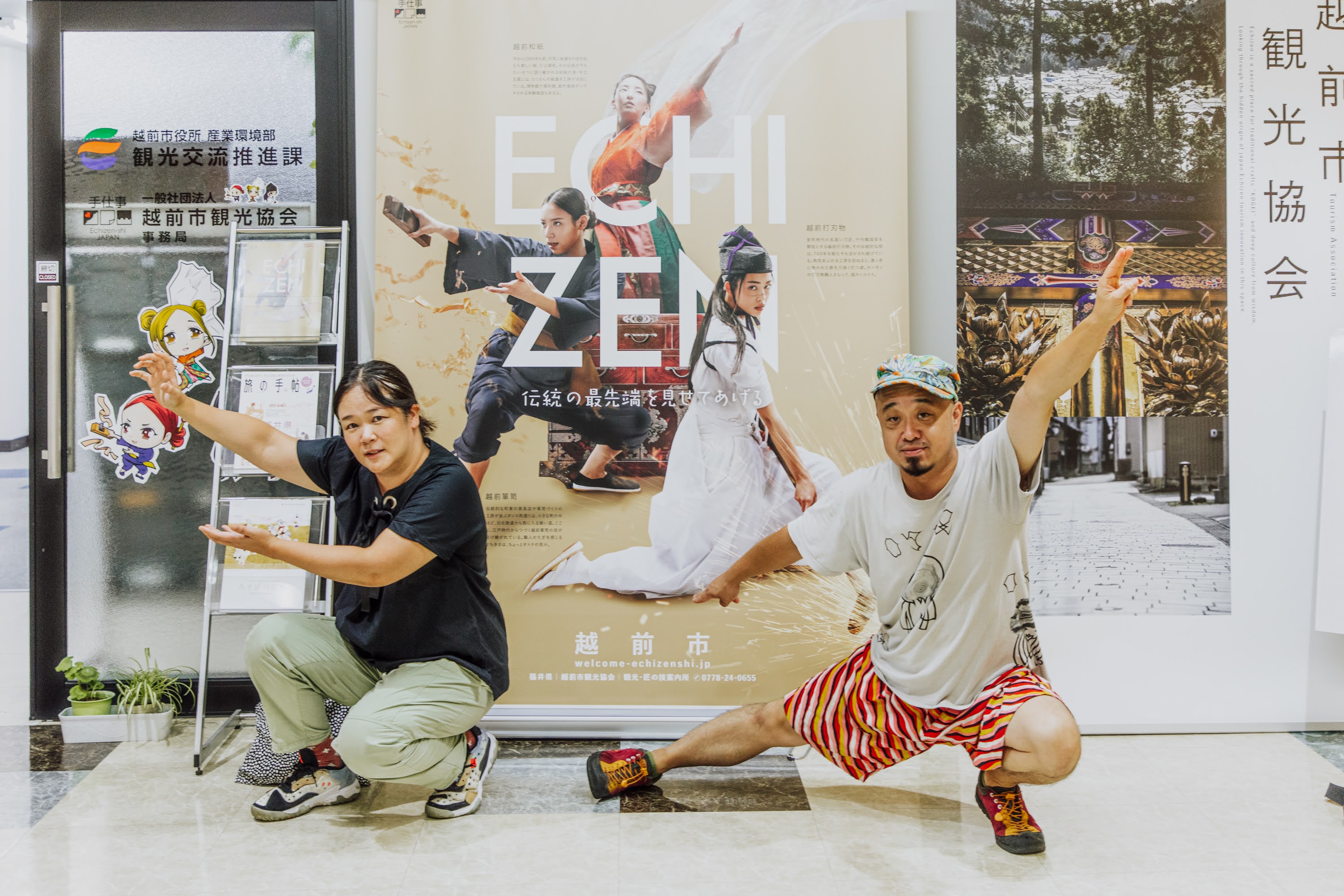 Left:Hiroko Mihara,Nanpu Shokudo (Chef) Right:Yoshifumi Ikeda,Founder of Give Me Vegetable
Left:Hiroko Mihara,Nanpu Shokudo (Chef) Right:Yoshifumi Ikeda,Founder of Give Me Vegetable
Even as mechanization advances and the demand for efficiency and speed increases, there are still many artisans in the Echizen region who are dedicated to their handiwork.In order to discover the secrets behind their handiwork, we visited the workplaces of artisans, farmers, and miso makers from the perspective of “work done by hand” in a wide range of fields.In this interview, a craftsman said to me, “Nothing can compete with handmade work,” a powerful comment.That one word has stayed with me throughout this trip.
Our first stop was Hideo Yamada Store.Founded in 1970 as a wholesaler of Echizen Uchihamono, they not only wholesale but also resharpen knives and replace handles.
Culinary researcher Ms. Mihara decided to have the stainless steel Santoku knife she uses in her daily life resharpened.
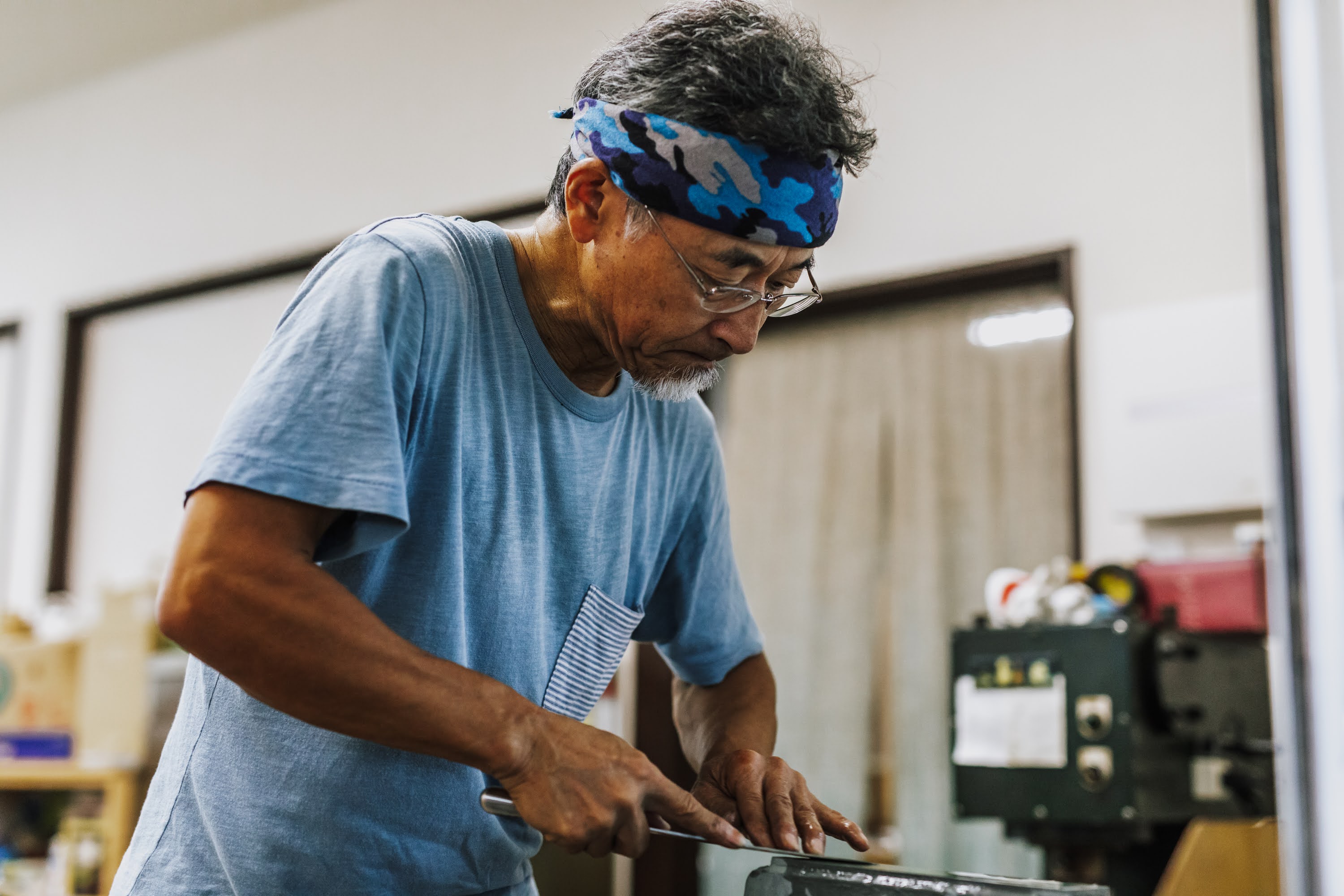 Mr. Yamada carefully checks the blade for minor irregularities and chips, and then carefully resharpen it in several stages.
Mr. Yamada carefully checks the blade for minor irregularities and chips, and then carefully resharpen it in several stages.
Each step of the process gradually brought the knife back to life, and with Mr. Yamada's help, the knife itself seemed to come to life and breathe again like a living creature.
"When I saw the beautifully sharpened knives, I felt that I wanted to decide on one knife that suited me and use it carefully for a long time,” said Mihara.
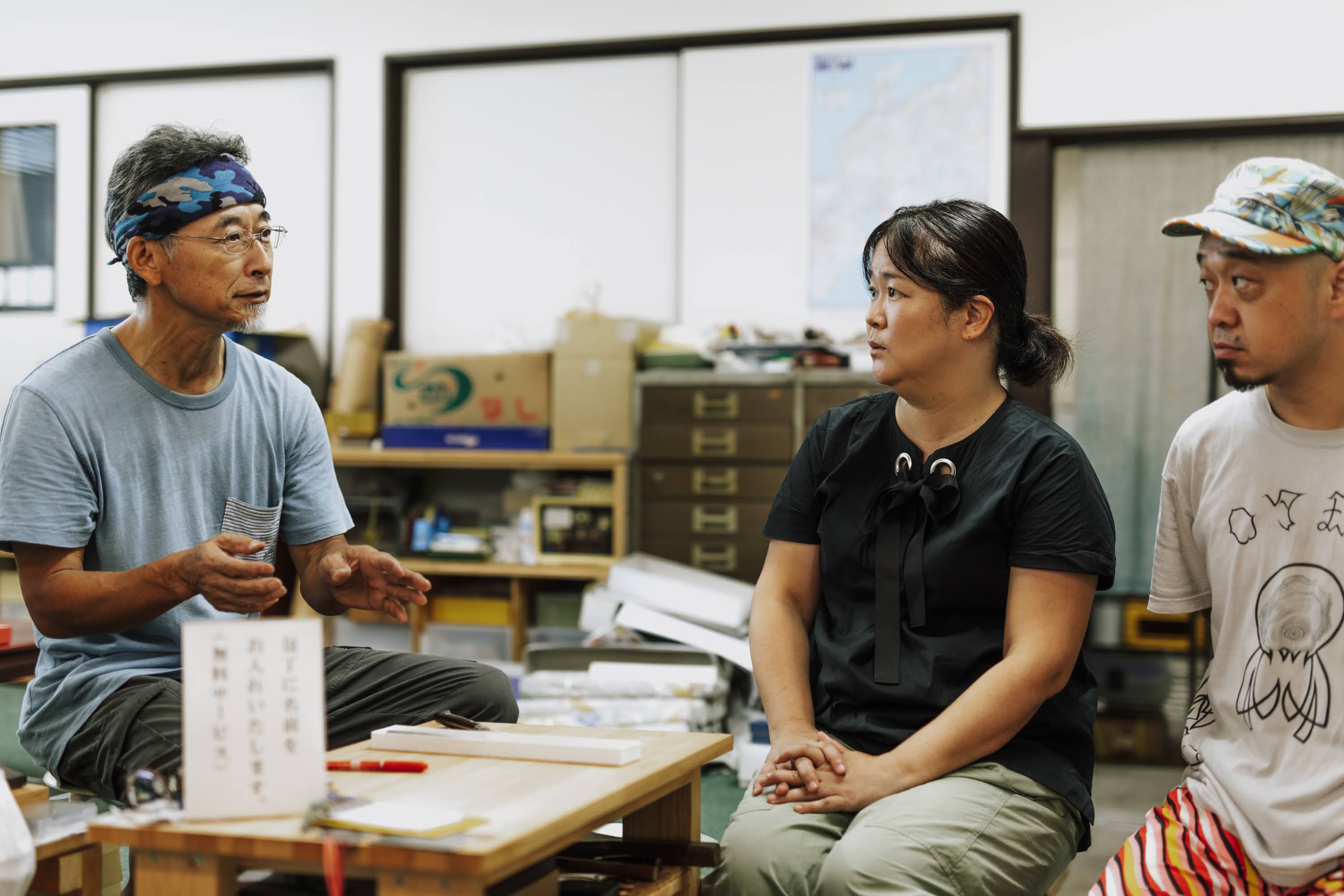 Although it is a tool that she uses every day, he carefully explained the types of knives, their uses, and features to me, a person who is not familiar with them.
Although it is a tool that she uses every day, he carefully explained the types of knives, their uses, and features to me, a person who is not familiar with them.
I can vaguely see what kind of knife I am looking for.
I felt that the presence of such stores in our community would make the ordinary, everyday act of “cutting ingredients” shine brighter, and this would lead to the enrichment of the community.
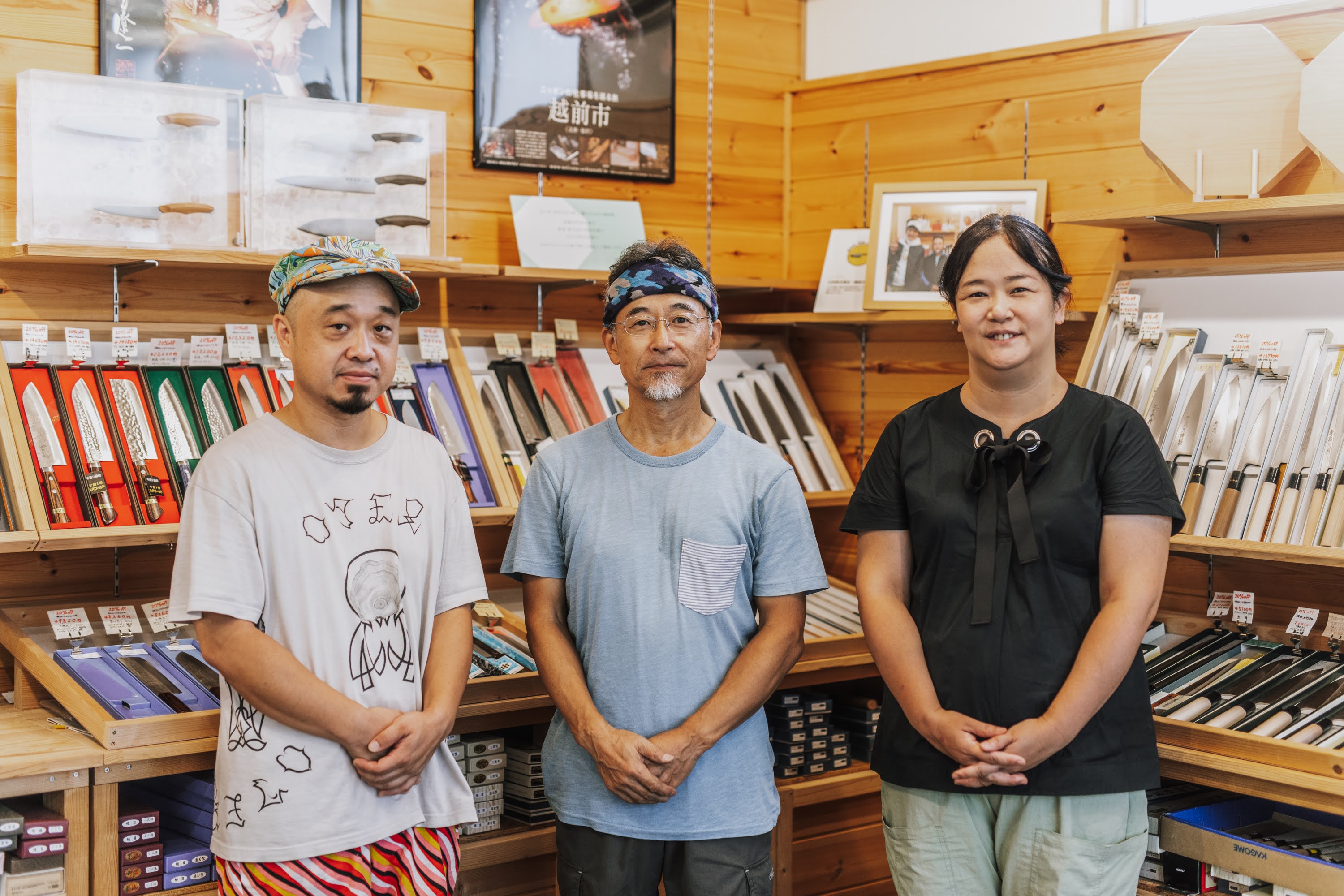
Next, we headed to the “Takefu Knife Village” where Takuji Ikeda, a sixth-generation traditional craftsman of Anryu Uchihamono and the future of blacksmithing, is located.
The most important characteristic of the Takefu Knife Village is “sharing wisdom and technology."
In the world of artisans, skills and wisdom are often considered off-limits and rarely disclosed, but this facility is designed to allow visitors to see everything from the craftsmen's work to their hands.
In fact, cutlery craftsmen from all over the region are frequent visitors.
In a time when tradition and traditional crafts are said to be dying out, this facility was created with the intention of improving the industry as a whole, sharing wisdom and techniques without being limited by individual interests, and is a very rare and valuable facility.
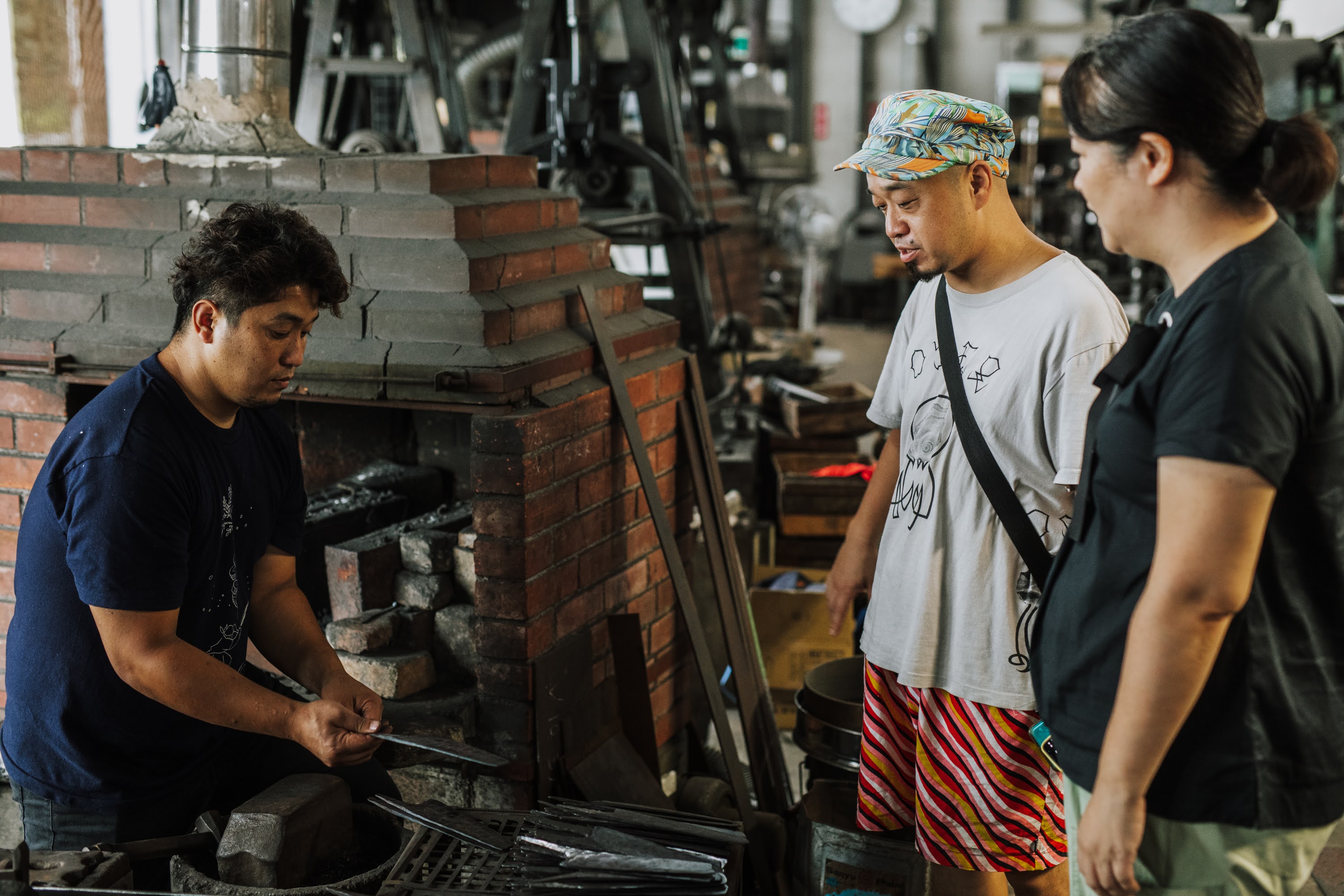
The hammered blades made by Mr. Ikeda, who works here, are individually forged using the fire forging technique, and because of the rush of orders from overseas, especially from Europe and the United States, it takes quite a long time before they are delivered.
Not only is it made of a special steel born in Takefu, but its beautiful futuristic design is very unique.
While inheriting tradition, Ikeda-san constantly updates his craft, striving to carve out a new future for craftsmanship. His dedication is reflected in his handcrafted works, which resemble true pieces of art.
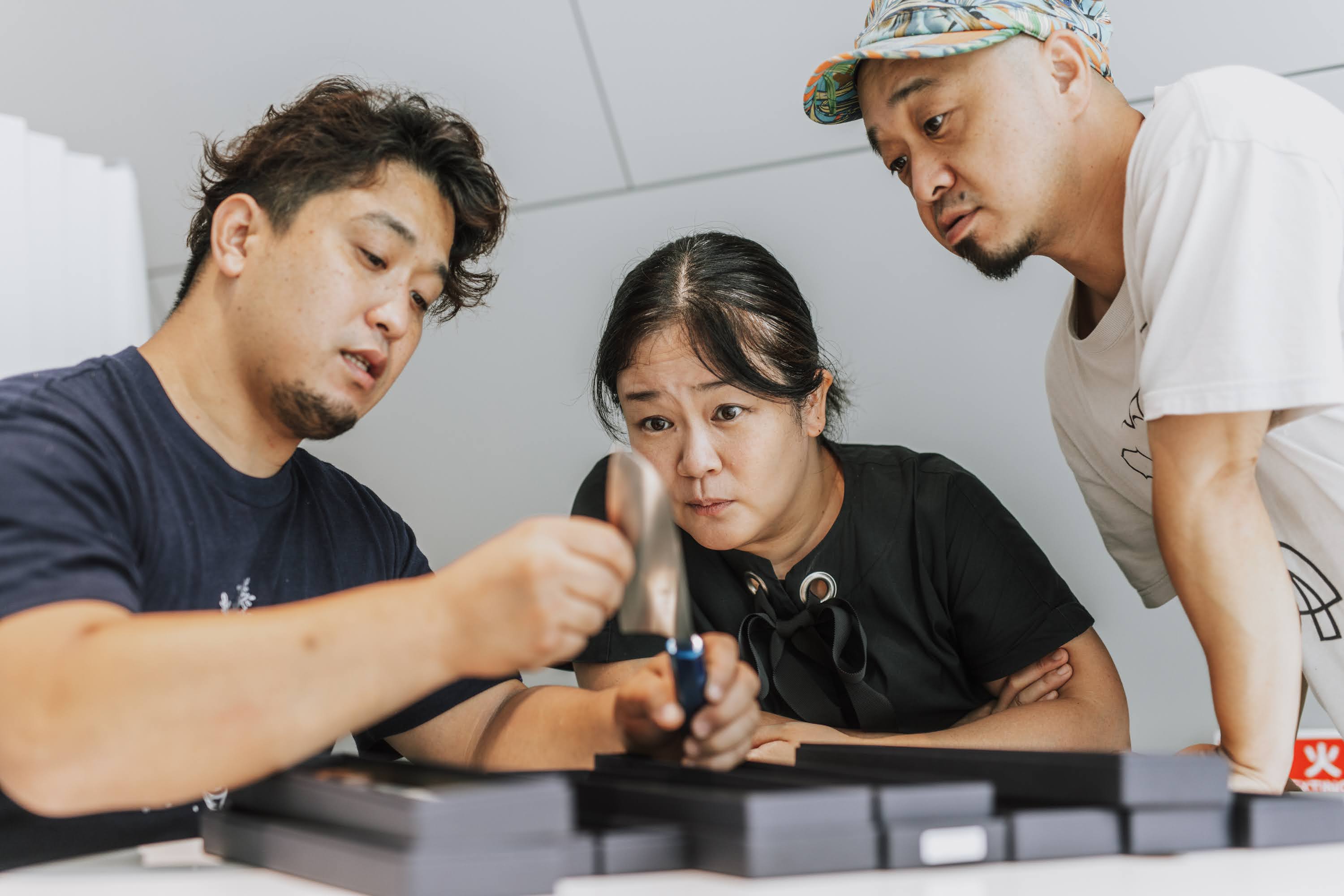
After actually using the knives, Ms. Mihara was shocked and said, “Mr.Ikeda's kitchen knives are lightweight, slice through ingredients smoothly as if they cling to them, and are easy to use.“ And more , “Having tools that are easy to use makes the work more enjoyable. There is a connection between the passing down and advancement of the art of hammered blades and the enrichment and happiness of people's lives.There is a connection between the passing down and advancement of the technique of hammered blades and the enrichment and happiness of people's lives.I was able to realize this, and I decided once again to continue to use this knife with great care,” she said.
When we were hungry, we headed to “Kikyoan,” which opened in 2015 and was selected for the Michelin Plate in 2021.
We ordered their famous oroshi-soba and hand-ground soba, of which only 10 are served per day.
The soba, which is adjusted daily according to the temperature and the condition of the uncooked soba to maximize its flavor, is a wild and aromatic buckwheat noodle.
The hand-ground soba noodles, in particular, had a deep flavor with a chewy texture and a strong firmness that went down one's throat.
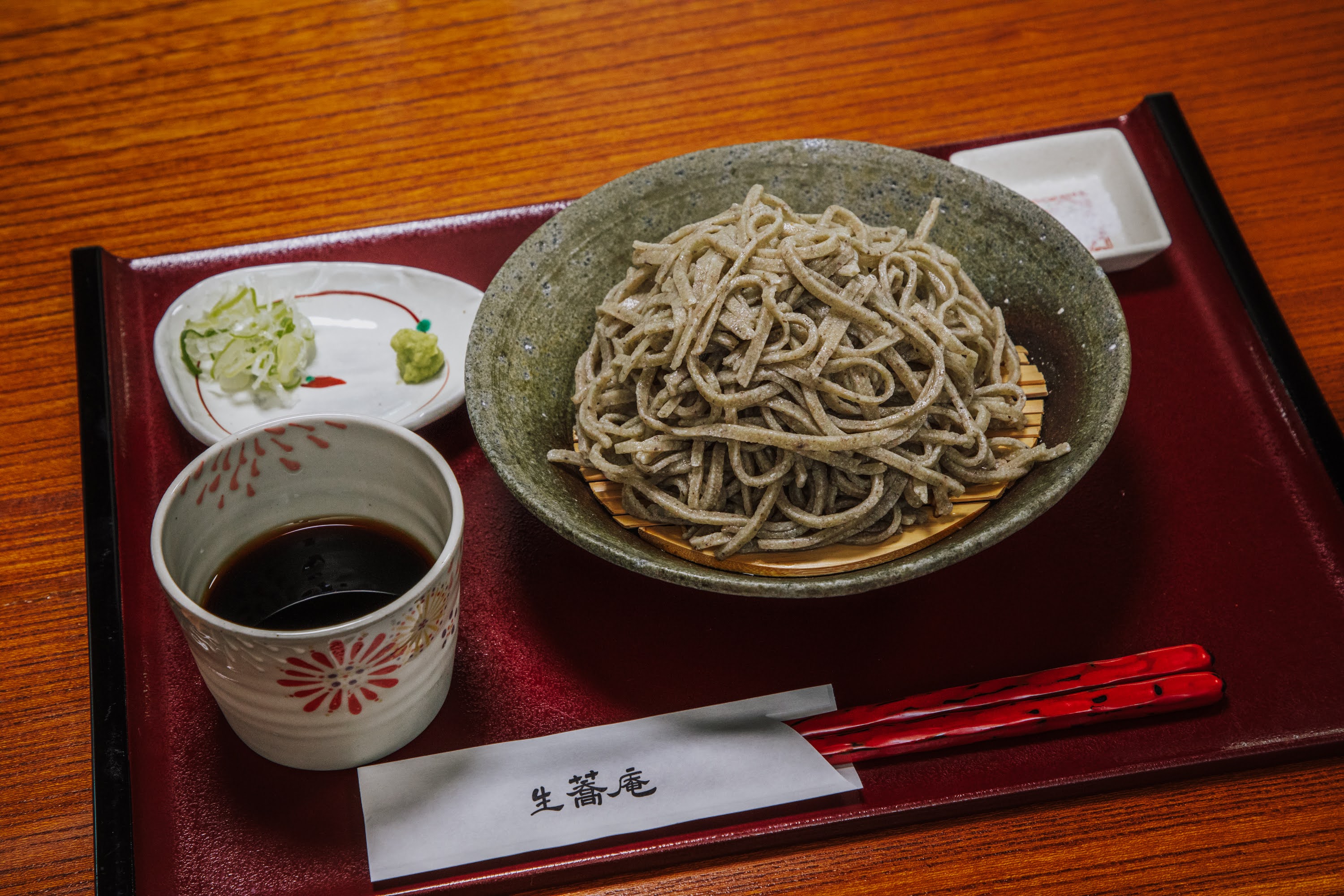
I was astonished by how different hand-milled soba tasted. When I asked the owner, Mr.Yamazaki, about the reason, he explained, "When grinding soba flour, the heat from friction can diminish its flavor. But in the end, nothing can match the quality of true handcraftsmanship."
Heat, sound, vibration, and other sensations felt through the hands cannot be measured by machines or numbers.
It was a store that made me realize the true pleasure of “handmade” work.
The next stop was the Marukawa Miso, which was founded in 1914 and produces only domestically produced pesticide-free and organic miso, as well as fertilizer-free and naturally grown miso, and uses natural koji mold attached to miso warehouses, which is rare in Japan.
 Of particular interest was the “Vivaldi Miso,” which was fermented by letting Vivaldi listen to it.
Of particular interest was the “Vivaldi Miso,” which was fermented by letting Vivaldi listen to it.
He says that he started this project because he wondered if there was some kind of change in the live koji mold in miso, receiving the vibrations of music in the same way that humans feel them. This is why he started this project.He says he sometimes feels a difference in the production process, such as “the miso itself becomes softer.”
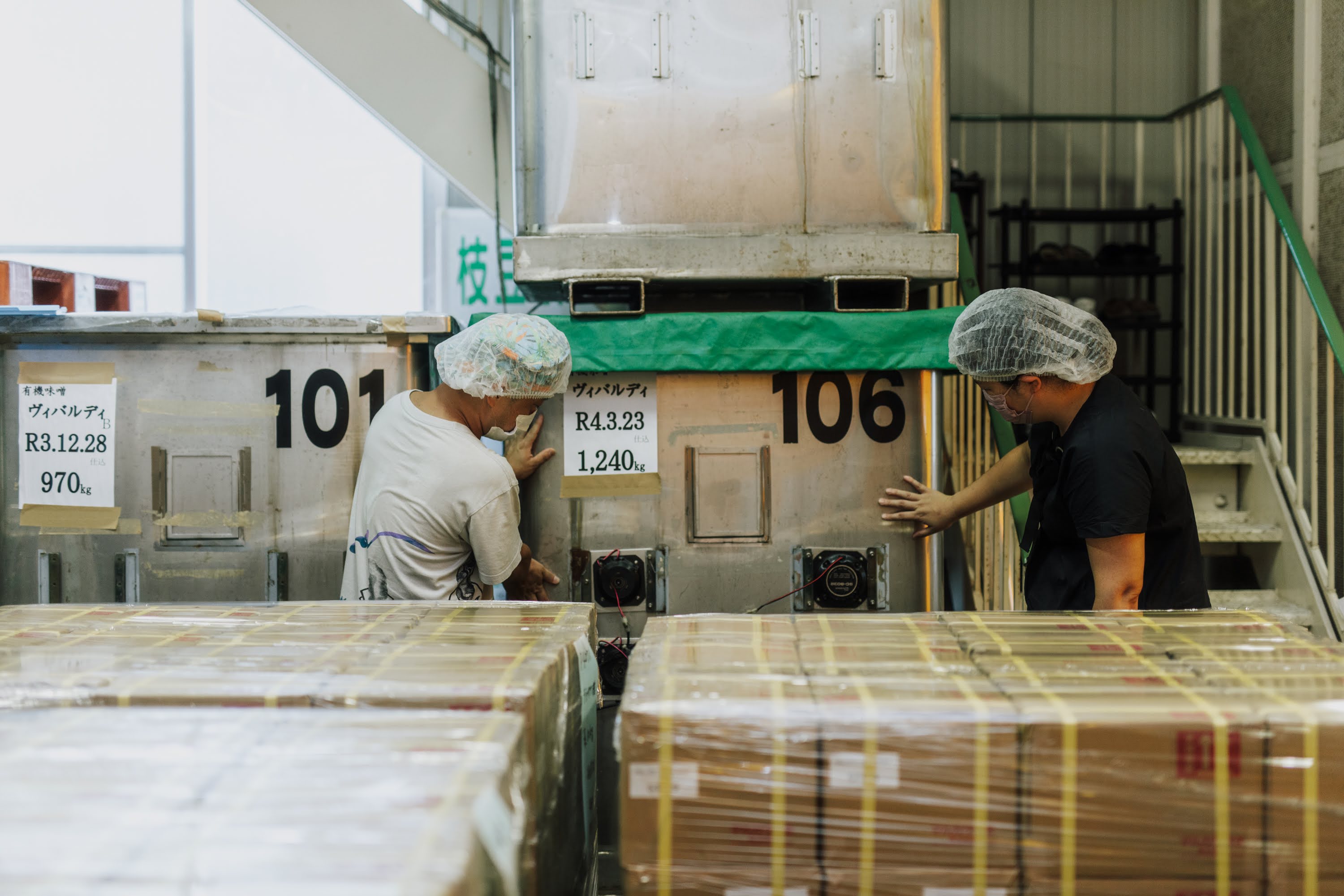 Our team at Give Me Vegetable makes *funazushi, a local Shiga dish, every year.*Funa-zushi is a traditional fish dish that has been eaten in Omi Province (present-day Shiga Prefecture) since the Heian Period (794-1185).
Our team at Give Me Vegetable makes *funazushi, a local Shiga dish, every year.*Funa-zushi is a traditional fish dish that has been eaten in Omi Province (present-day Shiga Prefecture) since the Heian Period (794-1185).
The same ingredients and the same method of preparation will produce different flavors and tastes for all of us.
It is said that this is because the indigenous bacteria living in the person's hands ferment together with the ingredients and determine the taste.
This is what makes “handiwork” so interesting, and the enjoyment of eating it increases when I think that Vivaldi's music is connected to miso, as if the spirit and energy of the creator resides in the miso through his or her hands.

Next, we visited Takoyaki Queen, a restaurant run by Yoshikazu Nagaki, a farmer in front of Echizen City Station.
We spoke at a takoyaki (octopus dumplings) restaurant that uses an abundance of fresh green onions and cabbage grown by the owner, who is committed to homemade, locally produced, and locally consumed food.
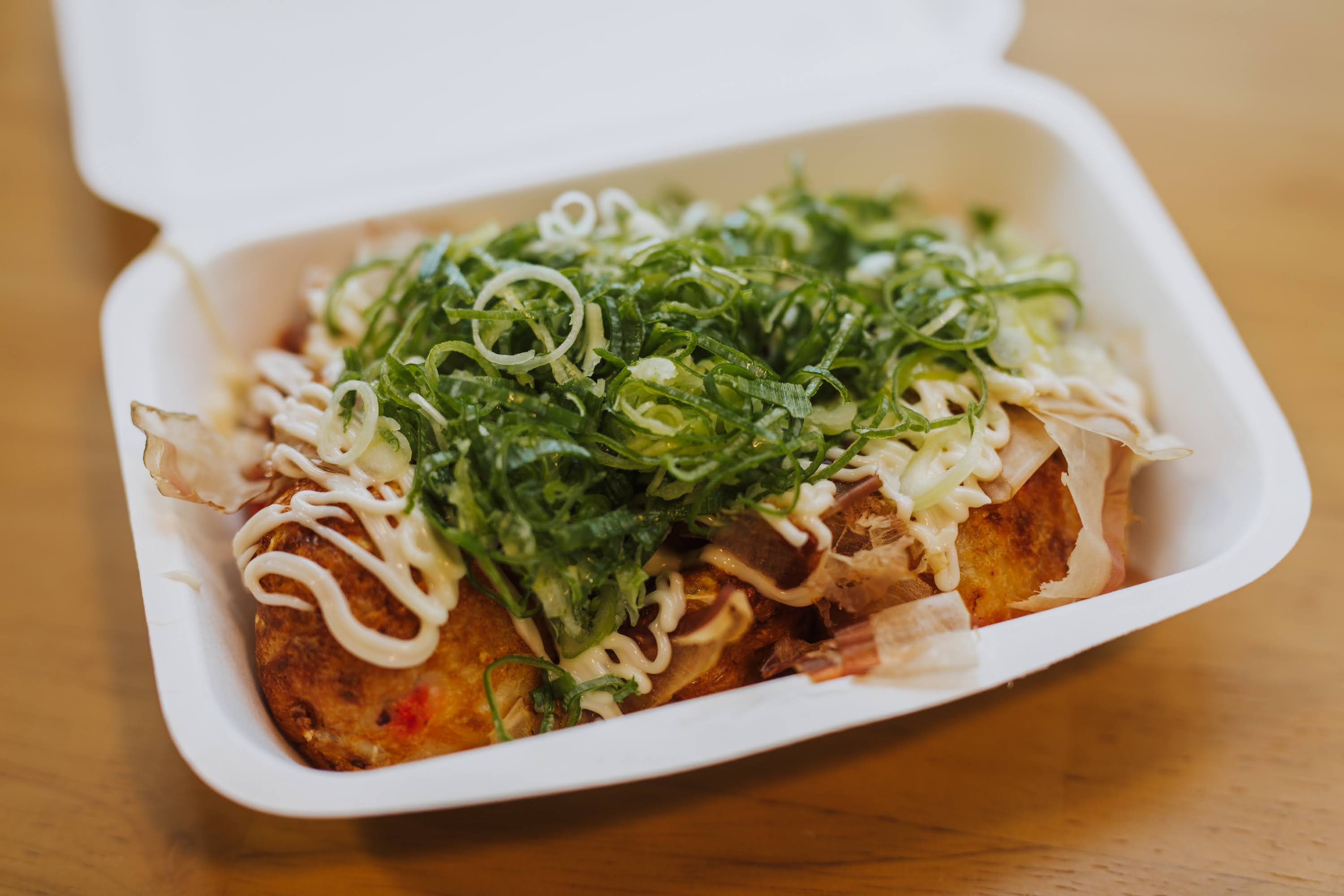 Mr. Nagaki is a rice farmer who grows a derivative of Koshihikari called “Milky Queen."He fell in love with it so much that he named the restaurant Queen.
Mr. Nagaki is a rice farmer who grows a derivative of Koshihikari called “Milky Queen."He fell in love with it so much that he named the restaurant Queen.
Lunch boxes made from the rice he grows are also sold at the store.
He also grows leeks and cabbage in the surrounding fallow fields.
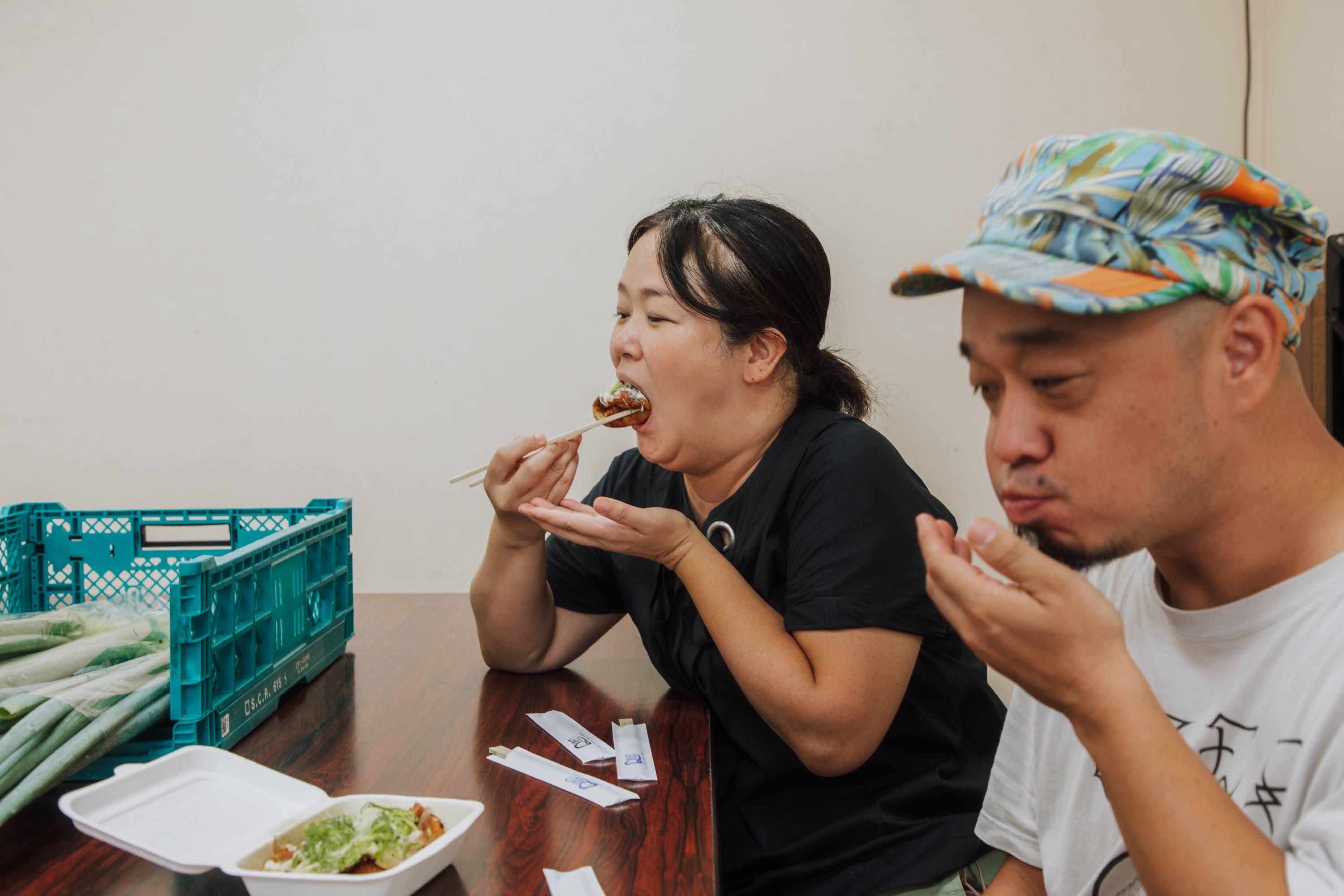 Mr. Nagaki handles everything from growing vegetables to selling takoyaki made with these ingredients.
Mr. Nagaki handles everything from growing vegetables to selling takoyaki made with these ingredients.
The sense of security of knowing that Mr. Nagaki is making the food we put inside our body right in front of us, and the wide versatility of takoyaki.
This delicious takoyaki store, filled with a sense of security and kindness, was visited by everyone from small children to the elderly, making it a place of relaxation for local residents and a store that made visitors happy.
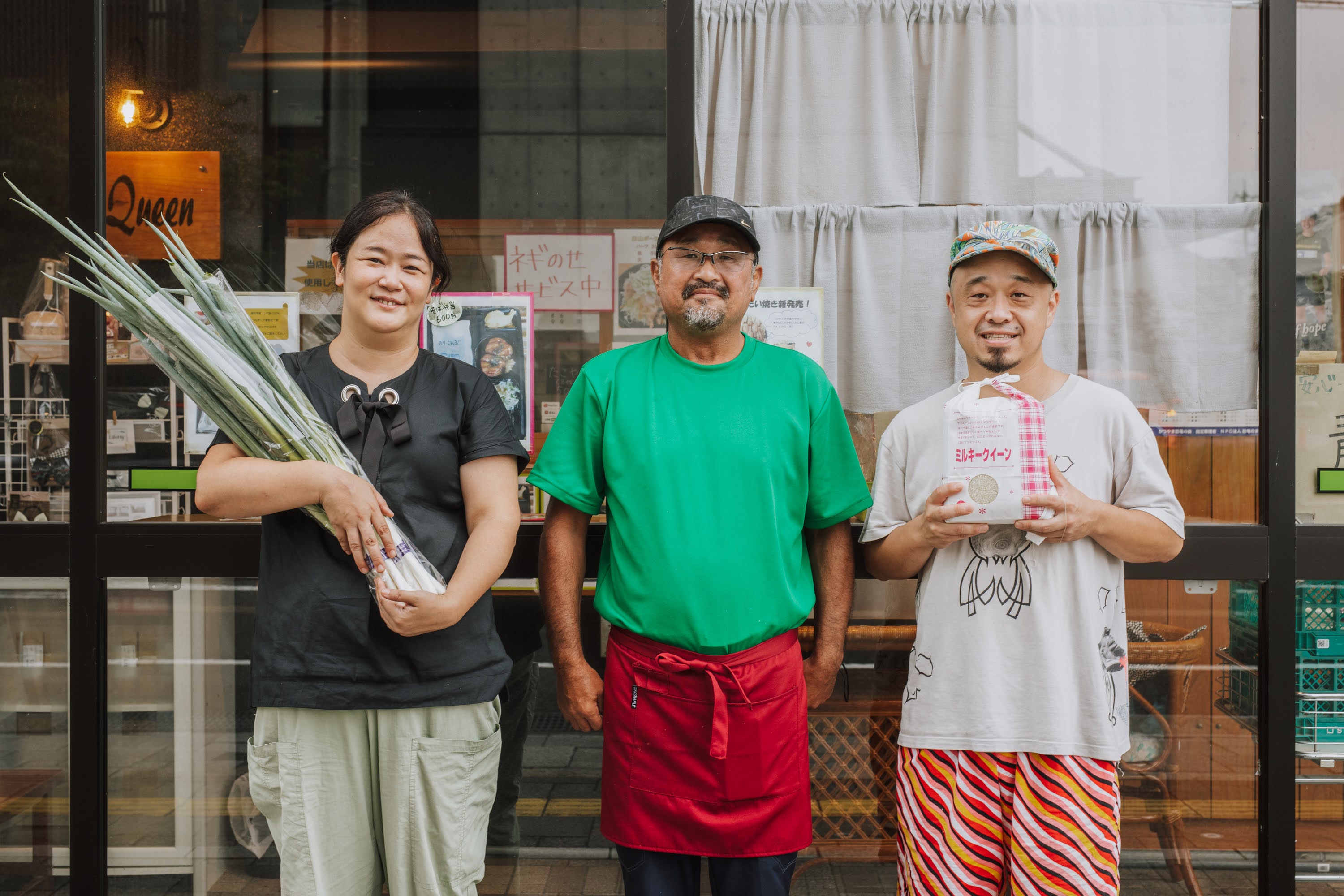
The last place we visited was Sadahiko Yasui, a white onion farmer.
What inspired him to become a green onion farmer was a scene of beautiful green onions growing in a fallow rice field they saw when he happened to visit the home of Mr. Nagaki of Takoyaki Queen.
"I was deeply moved by the sight and couldn't help but desperately want to grow white leeks,” Mr.Yasui says.
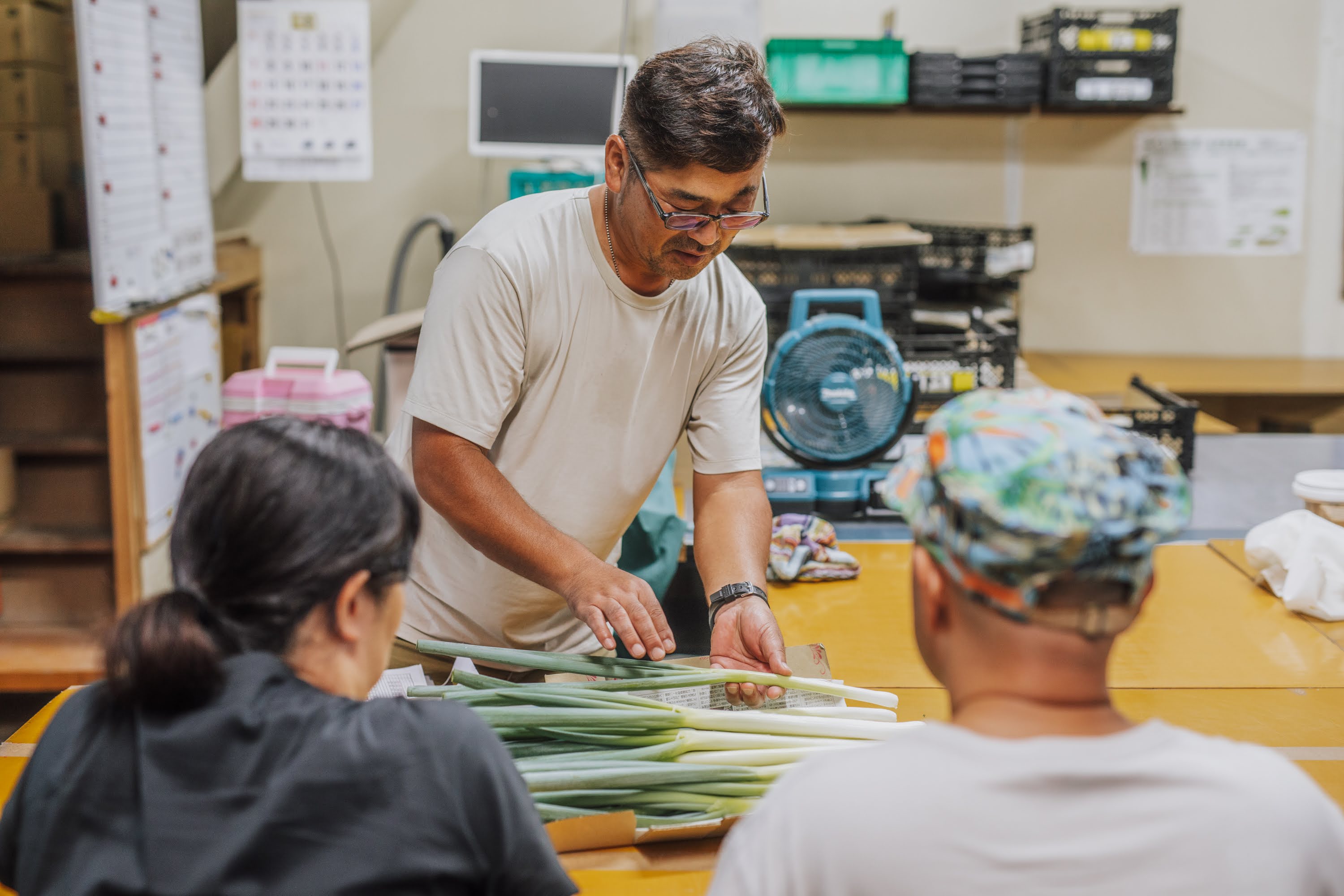 Just as Taro Okamoto, who saw a Picasso painting at the Louvre Museum, was strongly impressed and went on to become an abstract artist, Nagaki's white leek field left a strong impression on Yasui's mind and paved the way for him to become a leek farmer.
Just as Taro Okamoto, who saw a Picasso painting at the Louvre Museum, was strongly impressed and went on to become an abstract artist, Nagaki's white leek field left a strong impression on Yasui's mind and paved the way for him to become a leek farmer.
Mr. Yasui's green onion fields are as beautiful as a painting, and just being there is calming,and it was a very nice field where Mr.Yasui's love for leeks could be felt.
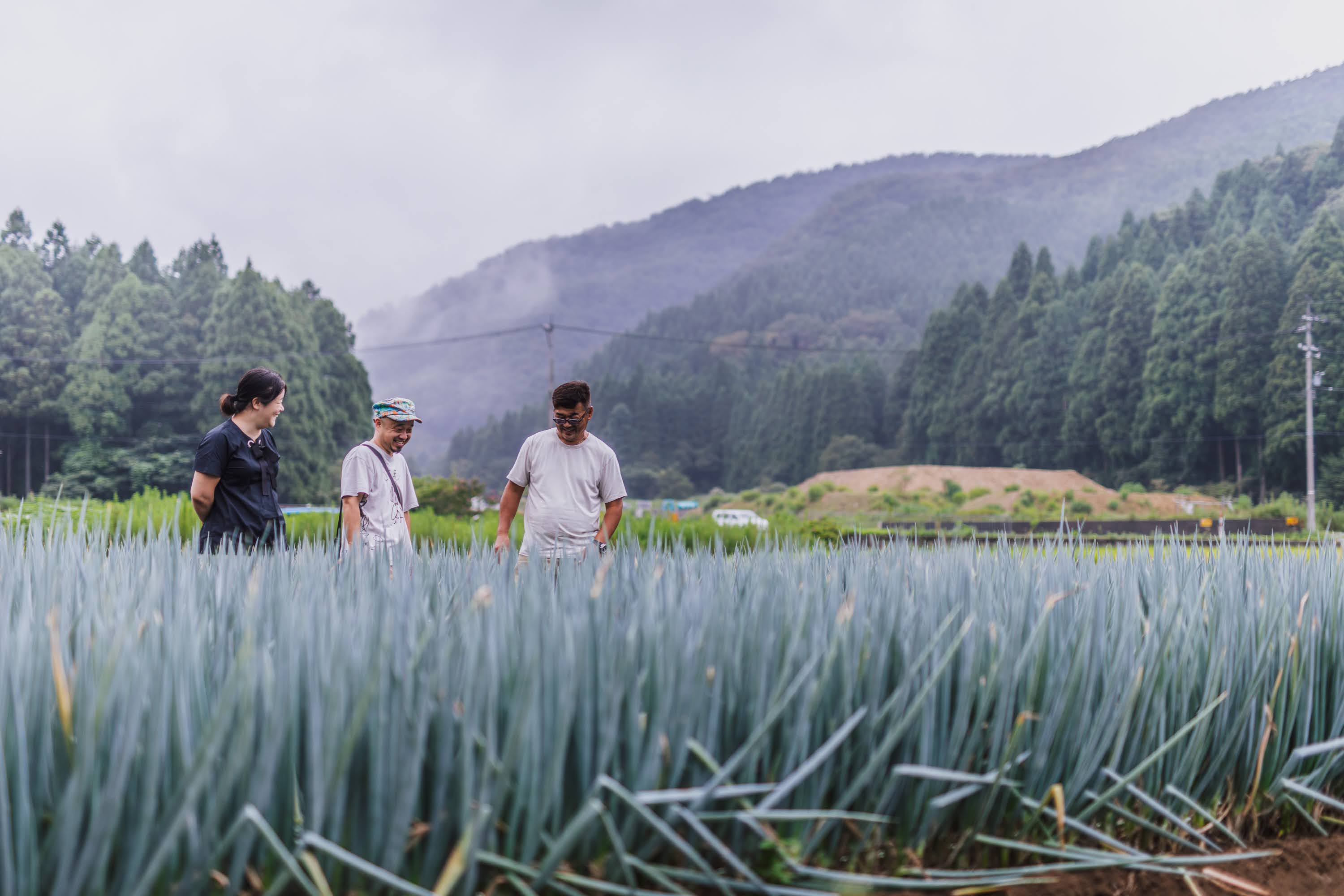
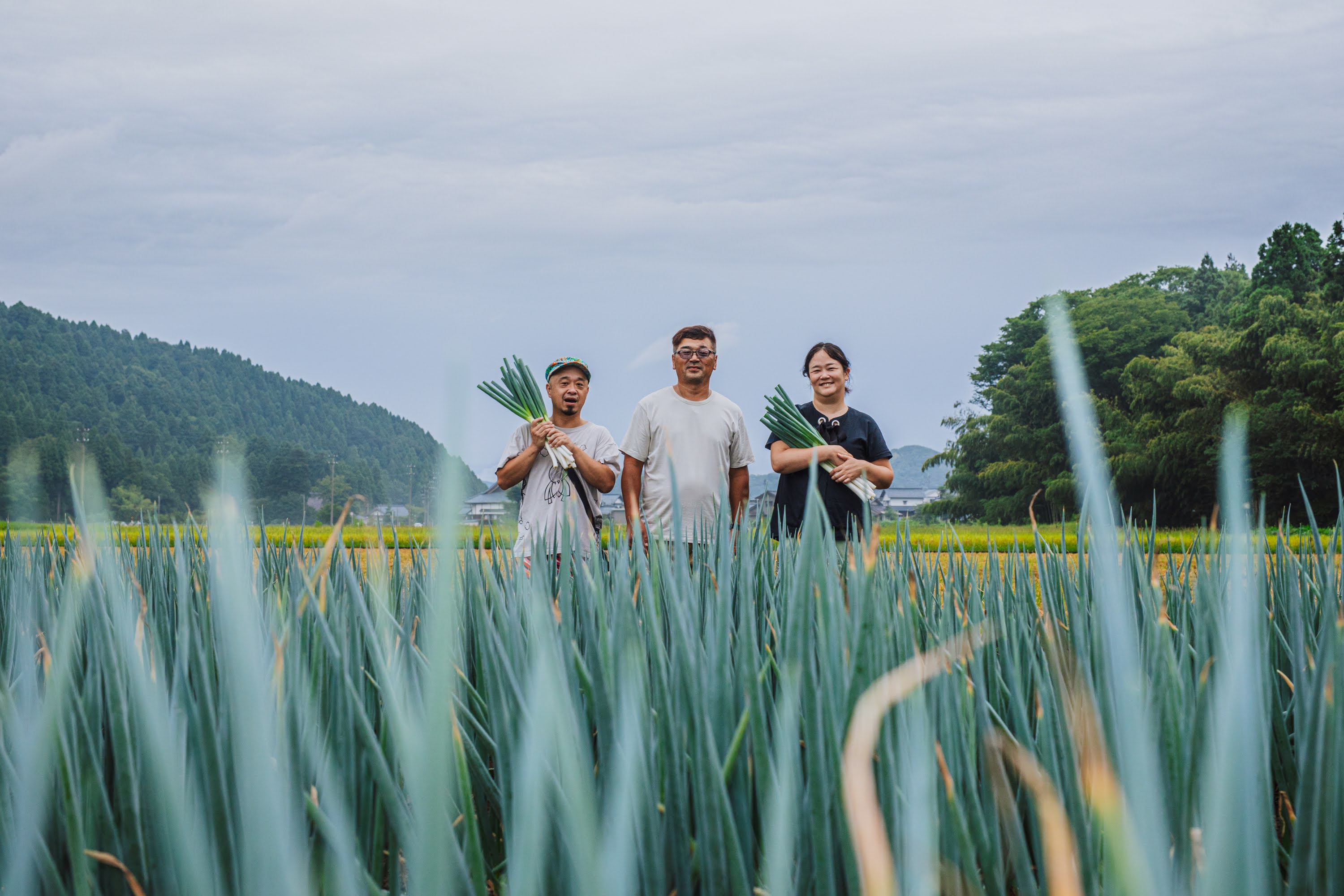
What we felt on this trip to visit handcrafts, not only crafts, but also agricultural products and cuisine, is that things created by people using their hands have something like a person's “energy” or “soul."If you read this travelogue and feel that it looks delicious, that you would like to touch or use it, I hope you will actually visit Echizen City and talk to the people who make it.
You will feel that the words spoken by the person, the way he/she creates, and the thoughts of the creator are all contained in the crafts and food, and you will feel the wonder of things created by human hands and the charm of “Echizen City,” a city of handicrafts where many makers gather.
┃Yoshifumi Ikeda : Representative of Give Me Vegetable
Since 2010, he has hosted more than 80 events in various locations throughout Japan, including Give Me Vegetable, a food and music event where the entrance fee and performance fee are vegetables (food ingredients).
Since 2016, he has presided over the “New Asian Transcendental Sense,” which seeks to create a new “Asian” sense through various creative methods, including music, food, painting, three-dimensional objects, decoration, and spatial production.
Also active as DJ EROCHEMIST. He also hunts. He is currently obsessed with making funa-zushi (fermented crucian carp sushi).
With the support of Sakai City, the Neo Asian Super Sense was held in May 2019 in front of the Nintoku-tennō-ryō Kofun, one of the world's three largest burial mounds.
As a guitarist of Kawachi Ondo, a folk song from Osaka, he has performed at many festivals in the Kansai region, including the Todaiji Temple in Nara.In recognition of various activities, he was nominated in the "People" category of the LOHAS Design Award 2014, organized by the Ministry of the Environment and the LOHAS Club in 2014. EROCHEMIST
soundcloud: https://soundcloud.com/tripxtrip
Give Me Vegetable HP: http://www.givemevegetable.com/
┃Nampu Shokudo Hiroko Mihara (Chef)
She is the leader of the cooking unit “Nampu Shokudo” (South Wind Restaurant).After working at the secretariat of “code”, a project by Ryuichi Sakamoto and other artists that focuses on the global environment and imagination, She is a former board member of “ap bank”, a non-profit citizen's bank by artists that provides loans to organizations that do not have an impact on the environment.Since 1999, She has established the cooking unit “Nampu Shokudo” and has introduced recipes in magazines, books, and on the web, catered events, and exhibited at museums and galleries.
Her books include "WHOLE COOKING," "100 Recipes for Dressings," and "The Book of Coconut Oil."
Participated in the food-themed group exhibition “FOOD SCAPE” at Arts Maebashi. She is an International Traditional Chinese Medicine&Medicinal Cuisine Specialist.